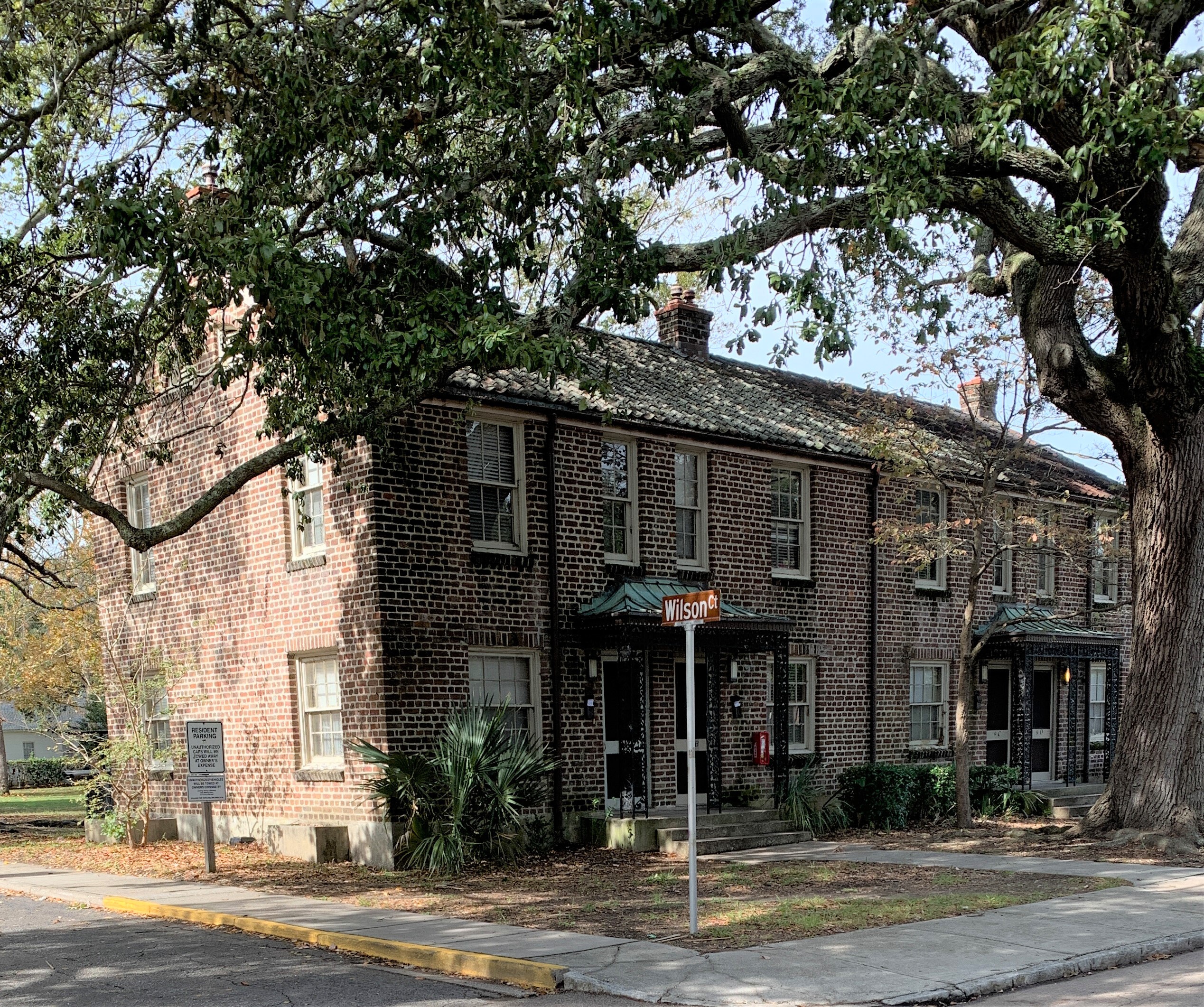Robert Mills Manor on:
[Wikipedia]
[Google]
[Amazon]
The Robert Mills Manor is housing complex located in Harleston Village in
 The original plans called for six two-story buildings with six apartments each and six eight-apartment buildings on the north side of Cromwell Alley. The project was extended between Pitt and Logan Sts. on the south side of Beaufain St. Four more eight-apartment buildings were to be built along Magazine St. between Wilson and Logan Sts. All of the buildings were to be of unpainted brick, using brick salvaged from the demolitions of existing buildings on the site.
The
The original plans called for six two-story buildings with six apartments each and six eight-apartment buildings on the north side of Cromwell Alley. The project was extended between Pitt and Logan Sts. on the south side of Beaufain St. Four more eight-apartment buildings were to be built along Magazine St. between Wilson and Logan Sts. All of the buildings were to be of unpainted brick, using brick salvaged from the demolitions of existing buildings on the site.
The
Charleston, South Carolina
Charleston is the List of municipalities in South Carolina, most populous city in the U.S. state of South Carolina. The city lies just south of the geographical midpoint of South Carolina's coastline on Charleston Harbor, an inlet of the Atla ...
that is included on the National Register.
History
Plans for a new housing complex began in May 1935 when thePublic Works Administration
The Public Works Administration (PWA), part of the New Deal of 1933, was a large-scale public works construction agency in the United States headed by United States Secretary of the Interior, Secretary of the Interior Harold L. Ickes. It was ...
decided to allocate $1.5 million to Charleston to clear slums and redevelop the land with new housing. The affordable rent was to pay off the cost of the project over 40 years.
The area included in the project was densely filled with dilapidated wooden houses with a few brick houses but also several large public buildings. At first, the city's new Charleston Housing Authority planned to demolish the old Medical College, the Old Charleston Jail, and the Jenkins Orphanage
The Jenkins Orphanage, now officially known as the Jenkins Institute For Children, was established in 1891 by Rev. Daniel Joseph Jenkins in Charleston, South Carolina. Jenkins was a businessman and Baptist minister who encountered street children ...
(which operated out of the old Marine Hospital). In January 1938, a third set of plans were submitted by city officials which would have demolished the Old Charleston Jail (except for the wall around the yard), would have used the ruins of the old Medical College (at the northeast corner of Franklin and Queen Sts.) as a recreation building, and would have converted the old Marine Hospital into apartments.
At a meeting on September 15, 1938, the project was named in honor of Robert Mills, the South Carolina architect for several notable public buildings including the Marine Hospital and part of the Old City Jail.
Bids for the demolition of about seventy houses were opened in October 1938. The new buildings were designed by Housing Architects Associated. The only houses that were spared for architectural merit were 59 and 63 Beaufain St. and 1 Franklin St. (also known as 34 Magazine St.).
Samuel Lapham VI
Samuel Lapham VI (September 23, 1892 – 1972) was an American architect.
Early life
Lapham was born on September 23, 1892, in Charleston, South Carolina. He was the son of Samuel Lapham V and Annie Grey Soule (a direct descendant of Pilgrim Geor ...
was the principal architect for the project and considered it a good example of Charleston style. On February 8, 1938, a building permit for $432,032 was issued for the new construction. A groundbreaking ceremony was held on February 11, 1939, at which Nathan Straus, administrator of the United States Housing Authority, spoke.
Mr. and Mrs. John M. Dorsey were the first occupants of the new development when they moved into 105-H Logan St. on October 16, 1939.
The project was planned as a Whites-only housing complex. In 1964, the National Urban League appealed to President Lyndon Johnson to desegregate Charleston's public housing on the basis of the Civil Rights Act of 1964.
Architecture
 The original plans called for six two-story buildings with six apartments each and six eight-apartment buildings on the north side of Cromwell Alley. The project was extended between Pitt and Logan Sts. on the south side of Beaufain St. Four more eight-apartment buildings were to be built along Magazine St. between Wilson and Logan Sts. All of the buildings were to be of unpainted brick, using brick salvaged from the demolitions of existing buildings on the site.
The
The original plans called for six two-story buildings with six apartments each and six eight-apartment buildings on the north side of Cromwell Alley. The project was extended between Pitt and Logan Sts. on the south side of Beaufain St. Four more eight-apartment buildings were to be built along Magazine St. between Wilson and Logan Sts. All of the buildings were to be of unpainted brick, using brick salvaged from the demolitions of existing buildings on the site.
The Preservation Society of Charleston
Founded in 1920, the Preservation Society of Charleston is the oldest community-based historic preservation organization in the United States. Susan Pringle Frost founded the organization, first known as the Society for the Preservation of Old Dwe ...
opposed plans to alter the high brick wall that surrounded the Old Jail. The Charleston Housing Authority rejected the request and decided to substantially lower the height of the wall to allow more light into the yard of the Old Jail.
References
{{DEFAULTSORT:Mills, Robert, Manor Houses on the National Register of Historic Places in South Carolina National Register of Historic Places in Charleston, South Carolina Houses in Charleston, South Carolina Public housing in Charleston, South Carolina